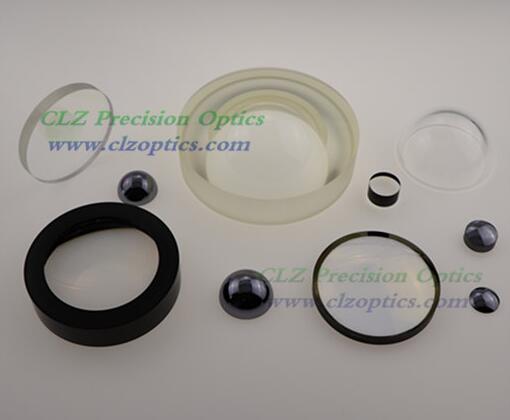Key considerations when selecting optical components
Feb. 09, 2022
There are some exceptionally demanding environments where electronic and optoelectronic systems are expected to perform at their best. Whether these systems rely on communications, intelligence or anything else, they need to be 100% reliable. This means that the components within them must also be of the highest degree of reliability.
Choosing the right precision optics is therefore a critical task and great care must be taken. But what should be considered when making these choices? That's exactly what we'll see in this article.
Factors to consider when selecting optical components for electronic and optoelectronic applications
Whether you're in the market for optical filters, lenses, prisms, windows or mirrors, or any other optical component for electronic and optoelectronic applications, here are the key considerations you need to explore.
Materials
The material you choose for your optical components will depend on your desired transmission range, environmental characteristics, and the specifics of your application. Different materials have different optimal transmission ranges, and some materials are more durable than others under extreme conditions.
You need to consider not only extremes of climate and change, but also chemical exposure, for example; contact with natural substances such as physiological saline; exposure to abrasion, shock and scuffing and electrical conductivity.
In particularly challenging environments, for example, sapphire proves itself to be one of the most durable materials available. Sapphire windows, lenses and prisms are in demand throughout the military and defense, space, medical and research sectors for their exceptional durability. Second only to diamond in natural hardness, sapphire is the first choice for optical components that need to withstand chemical exposure and extreme temperatures up to 2030 degrees Celsius.
Borosilicate is another material with excellent resistance to chemicals and salt water. Its low thermal expansion allows it to withstand rapid temperature changes without cracking or breaking like other materials. Typically used in infrared cutoff filters in camera detector systems, as well as in the manufacture of toughened windows for optical systems used in industrial environments and underwater cameras, borosilicate has excellent heat and chemical resistance and can withstand temperatures of up to 500 degrees Celsius.
For applications where a spherical lens is appropriate, a wide range of materials are available. For demanding environments, fused silica or quartz is a good choice due to its low thermal expansion. Sapphire is once again a highly desirable material because of its excellent strength and chemical stability as well as its superior optical transmission quality.
When choosing a material for your optics, always remember to also look at the transmission ranges as they can vary considerably. It is always recommended that you seek professional advice in this area to ensure that the material you choose provides you with the best quality and reliability.
Coatings
Coatings applied to optical components can significantly improve efficiency in terms of transmission, reflection and absorption. As with materials, different coatings will provide different benefits. But it is not just the coating itself that can have an impact: the way it is applied can also have an impact.
For example, the light transmission of a borosilicate IR cutoff filter is greatly improved by adding an anti-reflective hot mirror coating to the rear surface.
Spherical lenses also benefit from anti-reflection coatings, and broadband anti-reflection coated optical windows will achieve extremely low reflections, even at higher wavelength bands.
Custom coatings for electronic and optoelectronic components include ITO, AR, hydrophobic, DLC, and barrier coatings.
Other Options
When selecting optical components for electronic and optoelectronic applications, there are a range of other options to consider. This is where seeking expert, tailored advice becomes very important indeed. By applying a range of techniques, the efficiency, durability and performance of optical components can be greatly improved, although these will depend on the precise nature of the application and the environment in which it is used.
For example, telecom windows can be sandblasted with special patterns; made into unusual shapes; screen printed and edge polished. Infrared cut filters can be applied with scratch digging to resolve image speckles in HD cameras. A ball lens can be edged to produce a drum lens, which makes mounting and alignment in an optical system much easier. These are just a few examples of the options that can be explored with the expert guidance of an optical component specialist.
Specific factors
Specific factors should also be explored when creating an optical assembly. Focal length, backfocal distance and diameter must all be taken into account, as they all affect the efficiency of the overall system. Again, tailored advice is always very helpful.
CLZ's expert help makes your choice easy
Manufacturers of electronic and optoelectronic systems naturally rely on the highest levels of quality and design innovation to ensure competitive and operational advantages.
That's why at CLZ we have invested heavily in the industry's most superior, state-of-the-art metrology instruments and the most qualified metrology technicians, enabling us to ensure that every optical component we supply or manufacture for our customers fully adheres to their exacting requirements and meets our rigorous and audited quality standards.
If you would like to discuss your individual optical component requirements for any electronic or optoelectronic application, rest assured that our experienced, multilingual sales team and industry-trained technical experts are at your disposal, ready to develop solutions to meet your specific challenges.



















